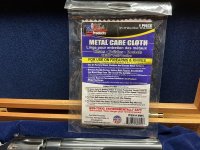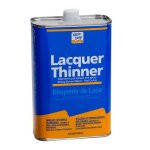You've got some pretty good advice here. Everyone has their own technique. The thing to remember is that generally stainless steel will not rust, while blued guns will. So, unlike a SS gun, you need some type of rust-preventative. That can take many forms, and everyone seems to have their favorite. After fifty-years of owning and shooting many different blued firearms (including dozens of antiques), my technique is to run a patch, soaked in Hoppes #9, down the bore/chambers and anywhere powder residue might be immediately after firing. If that means at the range, then so be it. I'm not going to clean the guy there, but while the steel is warm, I want to get that solvent on there and let it soak. After a good soak (at least half an hour), I will run a bronze brush down the barrel several times, and same for the cylinder chambers. Depending on how dirty it is, I will run another soaked patch thru barrel/chambers again and let it soak. I will take a toothbrush, dipped in the Hoppes, and scrub all the nooks and crannies along with the front of the cylinder. I will take a patch, again soaked in the Hoppes, and wipe all the powder residue off the gun, and give the whole gun a wipedown with it. I will run a clean patch on a jag down the barrel and chambers several times to remove all the loosened fouling. I follow that with a good gun oil (I use CLP, but several others work just as well) on a clean patch to lightly oil the barrel/chambers. I will then wipe the gunk off all the other areas, removing all the loosened gunk. I will follow that with a patch with a several drops of the gun oil all over the exterior of the gun. you don't want it to drip, but you want to cover everything because this is the protection that bluing needs. Finally, using a clean cloth (even a paper towel), I will wipe and wipe the surfaces to remove most of the oil. A microscopic film is all that is needed and you really can't wipe it all off, so I rub it until I'm not getting off any more oil. That's it.


